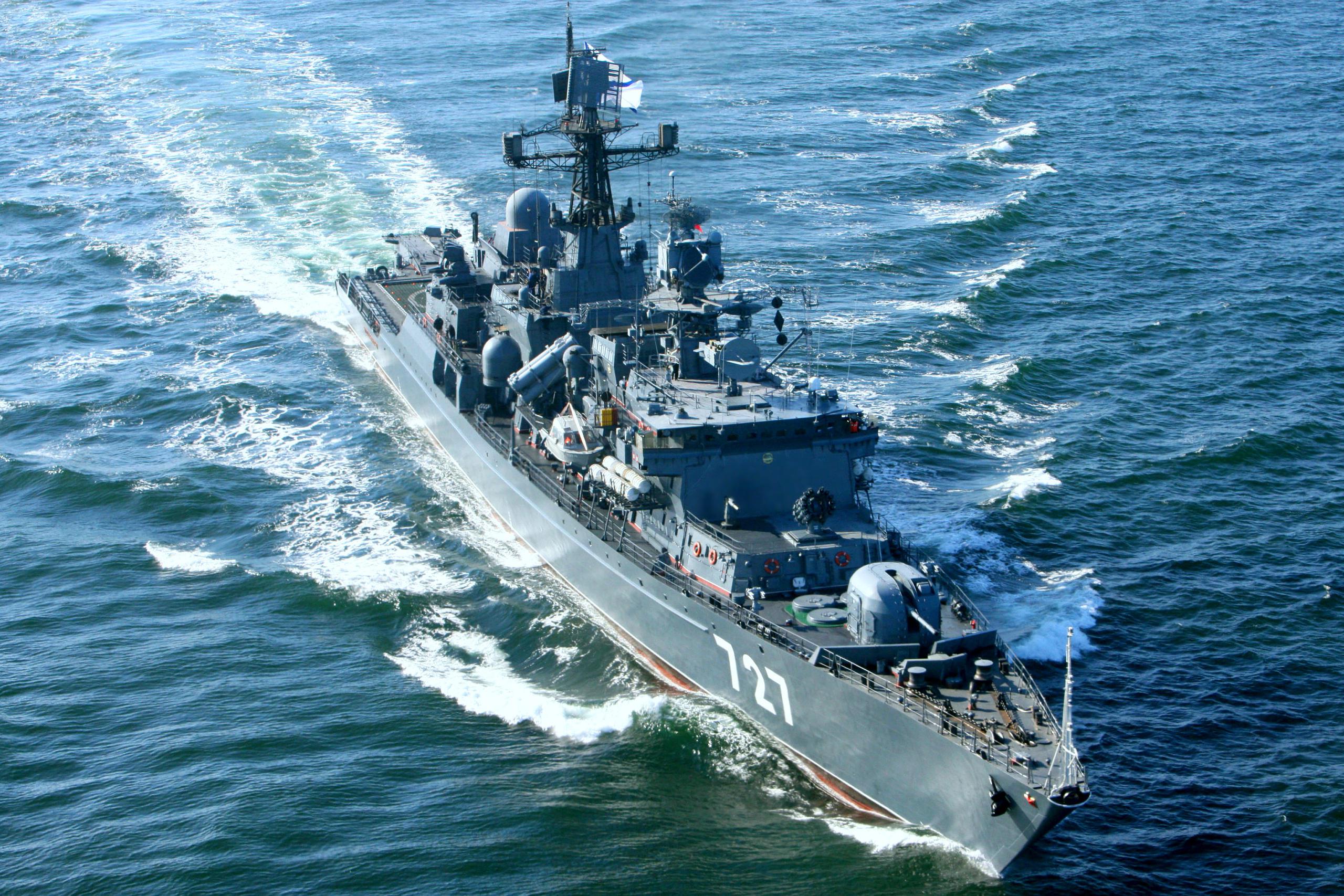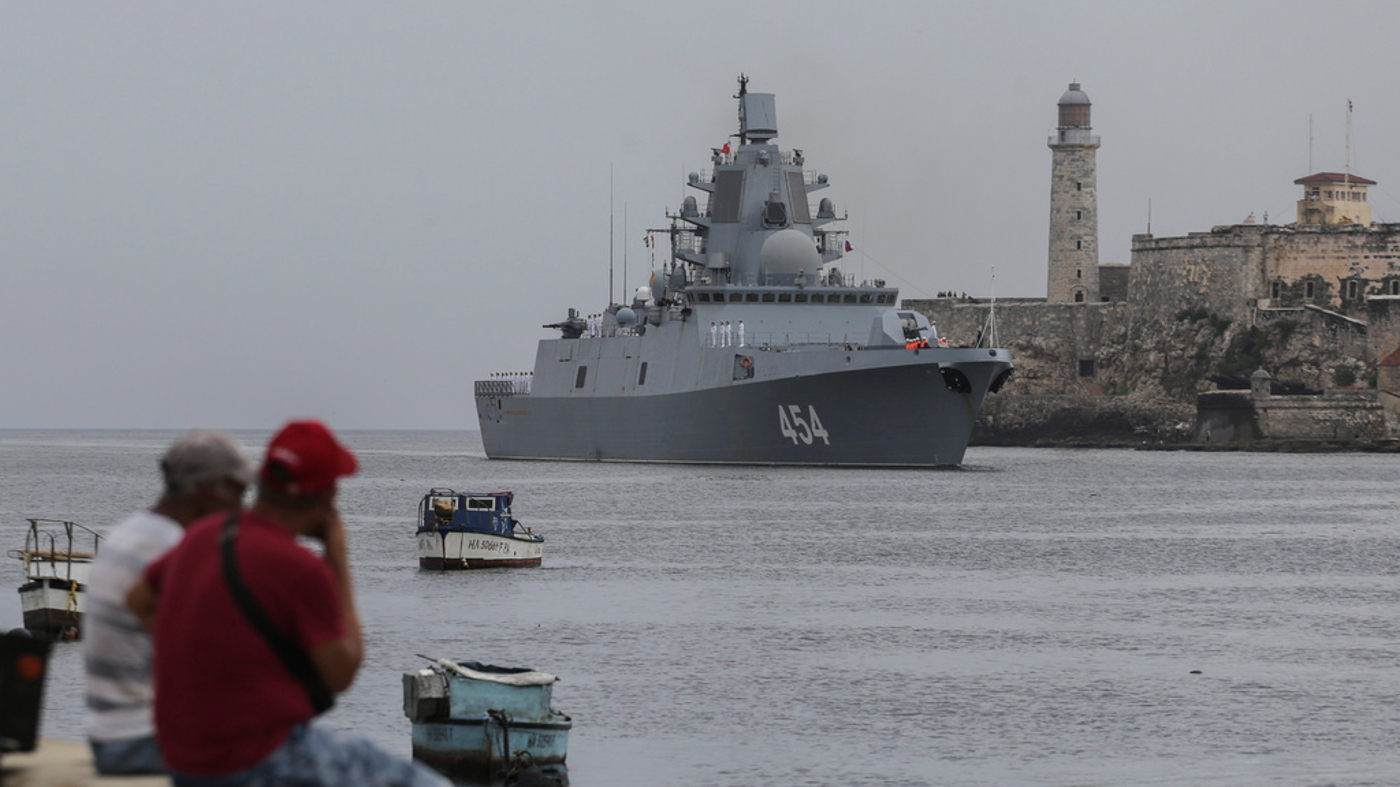Russian Send Warships to Cuba Again, Likely to Escalate Already-Tense Confrontations with U.S.
The Baltic Fleet warships of the Russian Navy, comprising the frigate "Neustrashimiy" (Fearless), the training ship "Smolniy," and the oil supply vessel "Yelnya," will be in Havana, Cuba's capital, located 160 km from Key West, Florida, which houses a U.S. Naval Air Station.
(DEFENCE SECURITY ASIA) — Approximately a month after Russian warships, including a nuclear submarine, visited Cuba, causing tensions with the United States, several Russian warships will again be in the Caribbean nation this weekend.
According to media reports, the Russian Navy frigate “Neustrashimiy” (Fearless), the training ship “Smolniy,” and the oil supply vessel “Yelnya” will be in the Cuban capital, Havana, from tomorrow until July 30.
These three Russian Navy ships are part of the Russian Baltic Fleet.
Cuba’s capital is only about 160 km from Key West, Florida, which is home to the U.S. Naval Air Station.
The visit of this group of Russian Navy warships to Cuba will undoubtedly be closely monitored by the United States Navy, as was the case last month when it deployed warships, maritime patrol aircraft, and nuclear submarines to shadow the Russian warships as they sailed near its waters.
The Russian Navy frigate “Neustrashimiy” weighs 4,400 tons (fully loaded) and is equipped with various weapon systems, including anti-ship missiles, anti-aircraft missiles, and anti-submarine torpedoes.

Last month, a group of four Russian Navy ships, consisting of the frigate “Admiral Gorshkov,” the Yasen-class nuclear submarine “Kazan,” the fuel supply ship “Pashin,” and the rescue tug boat “Chiker,” visited Cuba.
This visit triggered tensions with the United States.
The presence of Russian Navy ships near U.S. waters last month caused significant concern in Washington, prompting the U.S. to deploy its warships and ASW (Anti-Submarine Warfare) aircraft to monitor the Russian ships, particularly the frigate “Admiral Gorshkov” and the submarine “Kazan.”
The Russian warships, including a nuclear-powered submarine, conducted long-range attack drills while near the U.S. coast during their voyage to Cuba.
These ships reportedly sailed just 66 miles (106 km) off the coast of Florida, USA, while en route to Cuba.
During their voyage to Cuba, the Russian Navy ships also reportedly conducted simulated long-range attacks on “enemy” naval targets located approximately 600 km away.

The frigate “Admiral Gorshkov” and the Yasen-class submarine “Kazan” are equipped with hypersonic “Tsirkon” missiles, which not only have a speed of Mach 10 but also the capability to strike targets over 1,000 km away.
In addition to the hypersonic “Tsirkon” missiles, both modern Russian assets are also equipped with “Kalibr” and “Oniks” cruise missiles capable of long-range strikes.
Open Source Intelligence (OSINT) observers and data from flight/ship tracking applications indicated that U.S. and Canadian sea and air assets were “shadowing” and tracking the Russian military assets, especially the Yasen-class submarine “Kazan.”
The U.S. and Canadian navies reportedly deployed their anti-submarine aircraft, P-8 Poseidon and P-3 Orion, to shadow the Russian warships, particularly the Yasen-class submarine “Kazan.”
Additionally, the U.S. Coast Guard ship CG Stone, the U.S. Navy destroyers USS Truxtun and USS Donald Cook, and the Canadian Navy frigate HMCS Ville de Quebec were involved in shadowing the Russian warships during their journey to Cuba.


Concerned about the presence of the Russian warships, particularly the nuclear submarine “Kazan,” Washington also deployed its nuclear-powered attack submarine, USS Helena (SSN-725), to the U.S. military base at Guantanamo Bay, located in southern Cuba.
Observers noted that the deployment of the USS Helena to Guantanamo Bay was a “show of force” in response to the arrival of the four Russian Navy ships in Cuba.
The USS Helena (SSN-725) is a Los Angeles-class nuclear-powered attack submarine, commissioned into U.S. Navy service in 1987.
Weighing over 6,000 tons (full displacement) and measuring 110 meters in length, the USS Helena is armed with Tomahawk Block 3 cruise missiles capable of striking targets 3,100 km away, Harpoon anti-ship missiles with a range of 130 km, Mk48 ADCAP torpedoes, and naval mines. — DSA



Comments are closed.